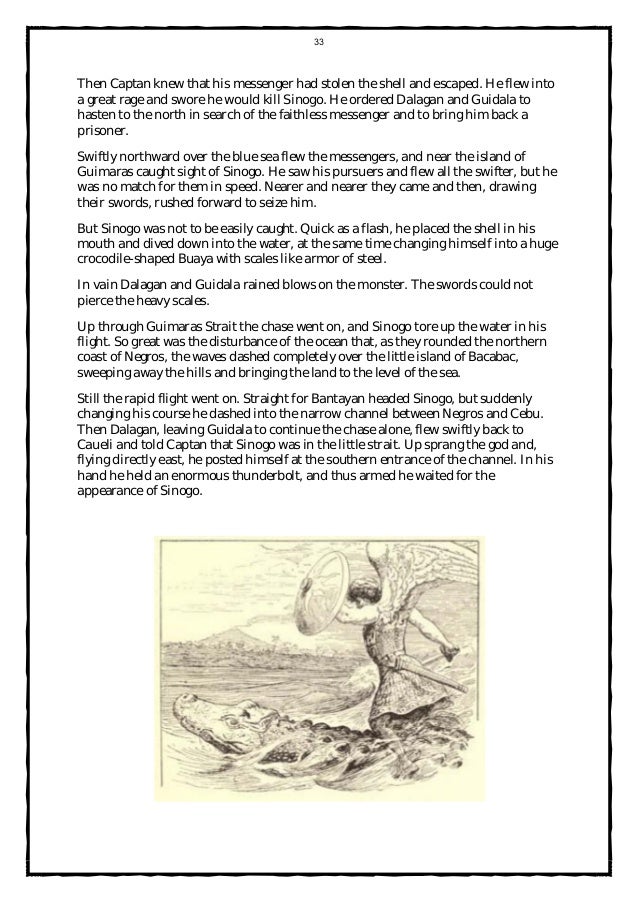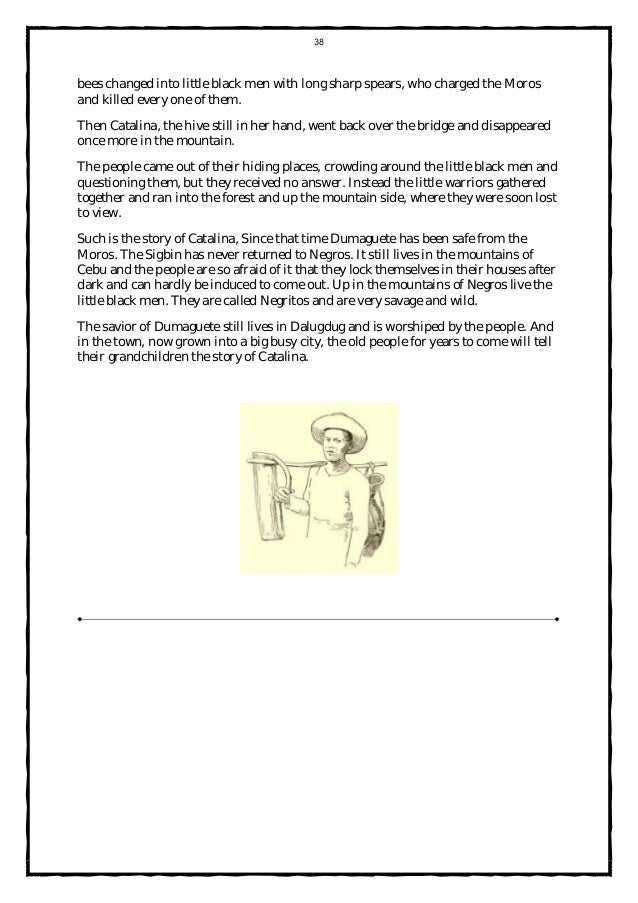

Elmo's fire") and cafre itself is from Arabic kaffir. For instance, the terms "duwende", "engkanto", "kapre" and "santelmo" are clearly Spanish-derived ( duende, encanto, cafre, and fuego de Santelmo i.e.

#Philippine folklore meaning plus#
Cultural Chop Suey: Centuries of Western colonization thanks to Spain and the US plus centuries of contact with Chinese, Malay (and through them, Indian) and other cultures prior to that have resulted in mythical/legendary/folkloric beings and concepts that in many cases bear some inescapable foreign influence, and it can be hard to uncover the root "native" or "indigenous" element, if such truly applies. Makiling's Tagalog navy lost to the Kampampangan army and submits to Apúng Suku who then changed his name to Apúng Sinukuan which literally means "to whom one submits to". There is a story where Dayang Makiling (Maria Makiling) led the Tagalogs in a war against Apúng Suku and the Kampampangans over resources. Even though there are some deities and characters who can be equivalents of each other, there are some tales where two or more of them have encountered. Crossover Cosmology: A rare occurrence but possible due the diversity of precolonial Philippines' polytheistic pantheons. The Tagalog tells that a bird instigated the conflict between the sea and the sky to make the land. Most ore secondary creation stories which the deities/higher powers take what has already existed and use them to make something new. Creation Myth: The Tagalog, Igarot and the Visayan people have myths that gives the origin of the world. Always Chaotic Evil: With some exceptions (like the Kapre, the Sarimanok and the Alan Bird), all of the Philippines' monsters are either man-eating demons or soul-stealing ghosts. Philippine mythology provides examples of: Please be sure to check out the pages of the Malaysians, Thai and Vietnamese to find out more interesting information about the religions and the mythologies of the other Southeast Asian civilizations. However, be warned that plenty of stories aren't for people with the faintest of hearts. While in the modern-day they are home to multiple different ethnicities with most of them having been converted by the Abrahamic, Buddhist and Hindu religions, this page deals with the mythologies of the ancient indigenous peoples. fox's wedding, bear's wedding, monkey's birthday).The islands of the Philippines in Southeast Asia have gone through a long and tragic history. The would-be-tamer must then hang on while the creature flies through the air, fighting madly to dislodge its unwelcome rider, until it is exhausted and acknowledges its defeat.Ī common saying has it that rain from a clear sky means " may kinakasal na Tikbalang."(Filipino, "a Tikbalang is getting married".) This was potentially connected with a similar Spanish proverb that claimed a witch was getting married when there was rain on a sunny day, although many cultures have such sayings in which a trickster figure gets married (cp. The Tikbalang must first be subdued, however, by leaping onto it and tying it with a specially-prepared cord. A person who obtains one of these spines can use them as a talisman in order to keep the Tikbalang as his servant. Another countermeasure is to ask permission out loud to pass by or, not to produce too much noise while in the woods in order not to offend or disturb the Tikbalang.īy one account a Tikbalang has a mane of sharp spines, with the three thickest of these being of particular importance. Supposedly a traveler can return to the correct path and not be misled by a Tikbalang by wearing one's shirt inside out. Tikbalang are generally associated with dark, sparsely populated, foliage-overgrown areas, with legends variously identifying their abode as being beneath bridges, in Bamboo or Banana groves, and atop Kalumpang (Sterculia foetida) or Balite (Ficus indica) Trees. It is covered with a fluffy dark mane, while its fur is a lighter color. The Tikbalang appears as a tall, bony creature resembling a humanoid horse. 
They are usually found standing at the foot of large trees looking around for anyone who dare to trespass on their kingdom's territory.Īccording to traditional folklore, the Tikbalang can also transform itself into human form or turn invisible to humans. Such tricks will keep the traveler from returning to the path, no matter how far he goes or where he turns.Ī superstition popular with the Tagalog of Rizal Province is that Tikbalangs are benevolent guardians of elemental kingdoms. Tikbalangs are said to scare travelers or play tricks on them which will lead them astray from the right path.







 0 kommentar(er)
0 kommentar(er)
